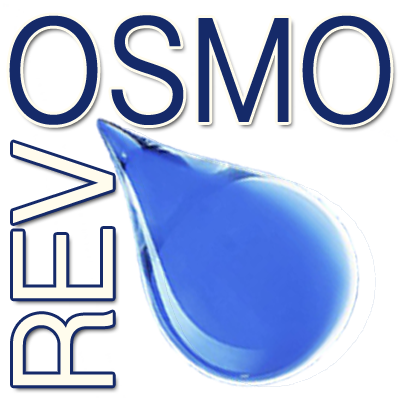Disclosure: Some of the links in this article are "affiliate links", a link with a special tracking code. This means if you click on an affiliate link and purchase the item, we will receive an affiliate commission. The price of the item is the same whether it is an affiliate link or not. Regardless, we only recommend products or services we believe will add value to our readers. By using the affiliate links, you are helping support our Website, and we genuinely appreciate your support.
Reverse Osmosis Water Filtration and Purification and Products
What is reverse Osmosis? Reverse Osmosis is a multistage system of filters and membrane(s) which removes impurities and contaminants from tap water and other sources. The number of filters and reverse osmosis membranes vary depending on the water source being purified and the desired production rate. A general home reverse osmosis water purification system generally consists of three filters, one membrane and pressure vessel, a holding tank and a faucet.
Home Reverse Osmosis Systems are configured into 5 stages.
Stage 1: Water flows from the source (tap water) into the first filter which is a micron filter which filters out relatively large particulate contaminants. Micron size can vary from 20 micron (large) down to 5 micron (small) depending on the source water requirements. Pleated Water filters also vary by type filter material and square footage of material. The best pleated filters are made from polypropylene filter cloth while the cheaper filters are made from a paper filter cloth. Polypropylene filters are generally more expensive than paper water filters but are cleanable and reusable in most cases. Pleated filters also vary by the amount of filter surface area. The best pleated filters will have larger pleats, which increase filter surface area and therefore increasing flow and lengthening service intervals.
Stage 2: From the pleated micron filter, feed water then passes through a carbon filter which serves two purposes. The primary purpose for the Reverse Osmosis Carbon Filter is to remove chlorine from the feed water. Chlorine can damage Reverse Osmosis Membranes. The secondary benefit is further micron filtration up to 10 microns. Carbon filters also have variation in quality. The better carbon filters have a thick wall of carbon increasing filter life up to 10,000 gallons while he cheaper carbon filters have a very thin carbon wall and therefore have a reduced carbon filter life. Feed water then flows from the carbon filter to the reverse osmosis membrane.
Stage 3: From there the feed water travels to the filter membrane(s). Reverse Osmosis Membranes are housed inside a pressure vessel. The spiral wound membrane is a sandwich of two layers of membrane and a layer of wick material which keeps the membrane from collapsing under pressure and feeds the purified water to the core membrane tube. Reverse Osmosis Membrane materials vary depending on the source. Dow Chemical once was the only source for the reverse osmosis membrane materials but more than likely there are now foreign sources. The material looks like an acid treated paper with a thin clear film on one side. Filmtec is Dow Chemicals brand of R.O. membrane and is the one that we recommend.
Stage 4: Then, after passing through the RO Membrane, the purified water flows through an additional carbon filter which will remove any remnant unpleasant odors or tastes.
Stage 5: The fresh water holding tank. Home, under sink reverse osmosis system storage tanks are generally 4 plus gallon capacity. Inside the tank is an air bladder that must be pressurized to pump water to the fresh water spigot. Over time the bladders in the tank fail and the tank must be replaced.
Reduce Plastic Water Bottle consumption by refilling your own reusable water bottles.

